In which Sid and Doris motor back to the Sound of Mull, watch anglers catch giant skate and join Morvern with St Kilda.
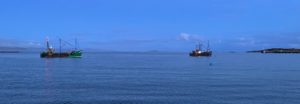 As night fell over Coll (a late event this far north) we were interested to find two large fishing boats sharing the visitor moorings, although the moorings say they are rated only to ten tons. The night was calm and they left early.
As night fell over Coll (a late event this far north) we were interested to find two large fishing boats sharing the visitor moorings, although the moorings say they are rated only to ten tons. The night was calm and they left early.
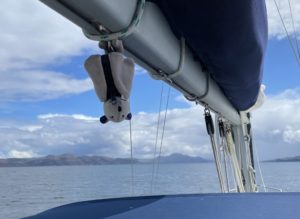
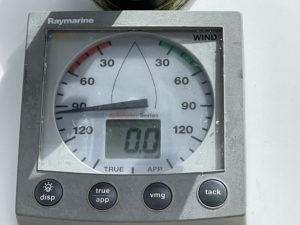 This morning we watched the wind turbines on shore and thought we might get some sailing but once under way the instruments showed no apparent wind. It was so quiet Miftah Bat came to roost under the boom.
This morning we watched the wind turbines on shore and thought we might get some sailing but once under way the instruments showed no apparent wind. It was so quiet Miftah Bat came to roost under the boom.
We passed the time thinking up the spec of an ideal boat which Doris will tell you all about.
Lochaline is off the Sound of Mull to the north. As we arrive Doris elects for pontoon bashing and then the wind gets up. Going into the loch is a little nervy as the channel is shallower than we are used to. Once in the loch itself no pontoons were harmed in the making of this manoeuvre.
We are on the Morvern peninsula. The whole area was made by volcanic action. Most of Mull is lava from its own volcano, which was live just 60,000,000 years ago. About 2,000,000 years ago glacial erosion formed the Sound of Mull so it’s just as well we didn’t get here any earlier.
We arrive in Lochaline mid afternoon and go exploring. Off the old West Pier, men are sport fishing for common skate. We see three caught by guys using huge rods and heavy duty line baited with mackerel. These skate are sixty inches plus and quite cross – they are strong and take a lot of landing. Once measured and photographed they are put back.
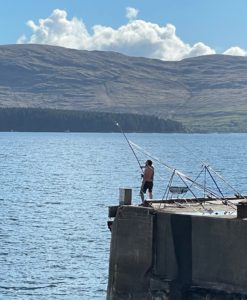
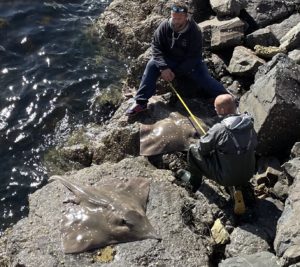
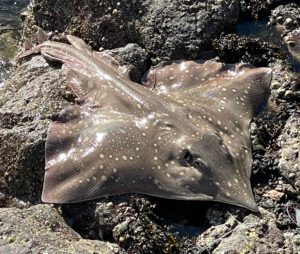
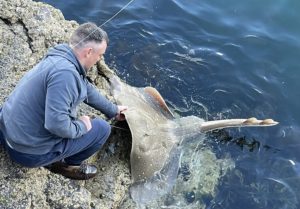
In Lochaline they have been mining sand deposited here 93,000,000 years ago on the shores of a tropical sea. If that could be recreated now that the dinosaurs have gone the tourist industry would be a lot less reliant on shortbread. But wait, maybe add back the dinosaur safari?
Anyway the volcanic eruptions covered quartz and other minerals with basalt, preventing further erosion. Assayed in 1923 the sand was found to be very pure and ideal for high quality lenses, but even so not viable to mine when imports were cheap because they came from surface quarries. This is the only sand mine in Europe. The sand stone is blasted to leave rooms and pillars.
In the early 1940s imports were unavailable when Britain needed periscopes and gun sights. Sand was first brought out by ponies, then a narrow gauge railway and now by articulated dump trucks. Surface plant crushes and washes the sand.
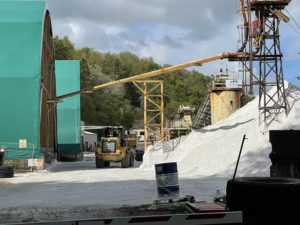
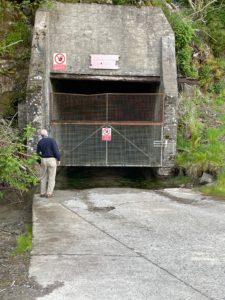
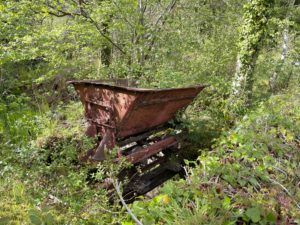
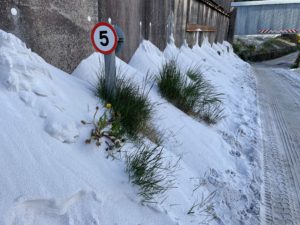
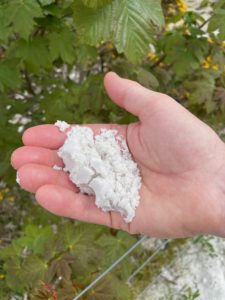
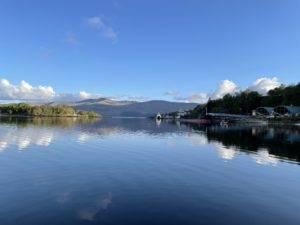 Back on Flyer we relax to enjoy the peaceful stillness of the loch and the scenery. There is a ship being loaded now. The loading involves wheel loaders pouring sand into a hopper which feeds a conveyor that drops sand into the ship. As they reverse the loaders go BEEP, BEEP, BEEP but louder than that. Here it is light until at least ten o’clock. We have lovely views of the loch and hillsides.
Back on Flyer we relax to enjoy the peaceful stillness of the loch and the scenery. There is a ship being loaded now. The loading involves wheel loaders pouring sand into a hopper which feeds a conveyor that drops sand into the ship. As they reverse the loaders go BEEP, BEEP, BEEP but louder than that. Here it is light until at least ten o’clock. We have lovely views of the loch and hillsides.
BEEP, BEEP, BEEP.
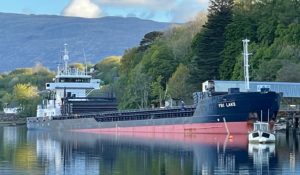 The conveyor does not move which has left the ship at an angle. Probably it will be level when they leave at high tide because they shuffle the ship under the conveyor. Or maybe someone is getting busy in the hold with a shovel.
The conveyor does not move which has left the ship at an angle. Probably it will be level when they leave at high tide because they shuffle the ship under the conveyor. Or maybe someone is getting busy in the hold with a shovel.
BEEP, BEEP, BEEP.
BEEP, BEEP, BEEP.
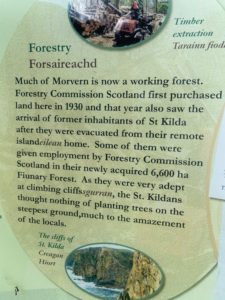 Sid and Doris have long been fascinated with the islands of St Kilda, 40 miles off the Outer Hebrides. There, even in the 20th century, families lived on puffins and eggs gathered by climbing the crags. They had sheep and could grow potatoes and barley. In 1930 when they were living in the conditions common in the 1830s the last thirty requested to be evacuated to Lochaline where the men worked for the newly founded make-work, the Forestry Commission.
Sid and Doris have long been fascinated with the islands of St Kilda, 40 miles off the Outer Hebrides. There, even in the 20th century, families lived on puffins and eggs gathered by climbing the crags. They had sheep and could grow potatoes and barley. In 1930 when they were living in the conditions common in the 1830s the last thirty requested to be evacuated to Lochaline where the men worked for the newly founded make-work, the Forestry Commission.
BEEP, BEEP, BEEP.
And motor sport fans might like to know the islands were then bought by The Earl of Dumfries. Yes, as in Johnny Dumfries partnering Ayrton Senna at Lotus in 1986, the Marquess of Bute who died this March. We contemplate that.
BEEP, BEEP, BEEP.
As Sid says, it does all join up.
BEEP, BEEP… no beep?………
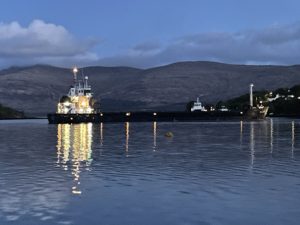 The loaders fall silent and the ship departs, leaving the world to darkness and to we.
The loaders fall silent and the ship departs, leaving the world to darkness and to we.